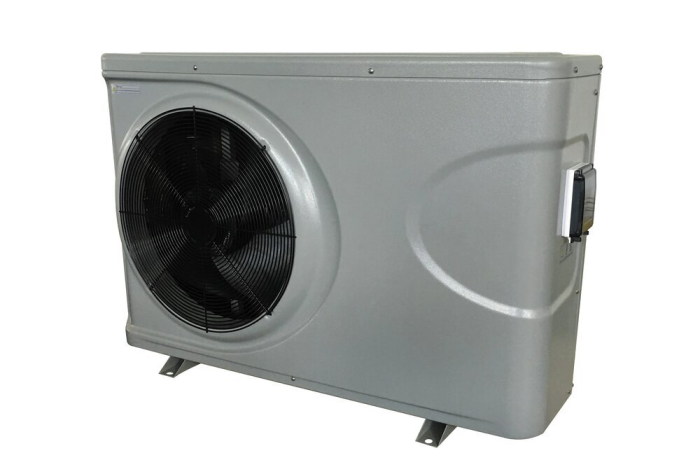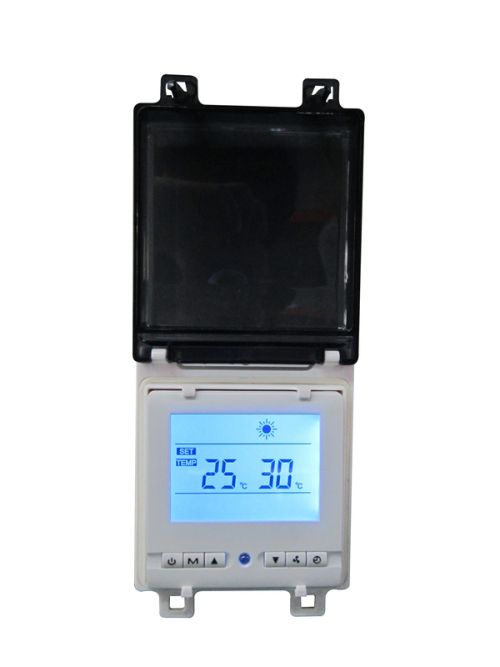PoolProfessional heatUP
- Titanium heat exchanger suitable for salt water
- Retrofitting with bypass possible
- Integrated control with LCD display
- Heating and cooling function
- Minimal maintenance
Sold Out
The selected product is currently not available. As soon as the product is on stock, we will send you an E-mail.

Product information
An early start to the season and extended autumn bathing fun are guaranteed thanks to the powerful PoolProfessional heatUP. This makes bathing a pleasantly warm pleasure even on days with little sunshine. The built-in titanium heat exchanger also makes this PoolProfessional heatUP suitable for salt water pools. The integrated control with a practical LCD display makes it child's play to operate the heat pump. Retrofitting is effortless, and thanks to minimal maintenance, you have more time to relax. Experience the pleasant feeling of warm pool water - even on cool days!

LCD-Display
All data and functions are easily and quickly accessible via the display.
Water capacity: 35.000 l
Minimum water flow rate: 4.000 l/h
Dimension: 100,20 x 38,50 x 65,70 cm
Salt water suitable: yes
Connection size: Ø 50 mm
Heating power*: 6.500 W
Input power heater*: 1.100 W
Heating input current*: 5,40 A
Cooling possible: yes
Cooling capacity*: 4.200 W
Cooling input power*: 1.200 W
Input current cooling*: 6,00 A
Input power maximum: 1.550 W
Input current maximum: 7,30 A
Power supply**: 220-240V~ / 50Hz
Performance coefficient COP heating: 6
Energy efficiency ratio EER cooling: 3,50
Protection class: I
Protection class: IPX4
Sound pressure level (10 m): 41 dB(A)
Suction pressure nominal: 0,70 MPa
Suction pressure maximum: 1,50 MPa
Delivery pressure nominal: 3,00 MPa
Maximum discharge pressure: 4,30 MPa
Refrigerant: R32
Refrigerant charge maximum: 450 g
Global Warming Potential GWP: 675
CO2 equivalent: 0,30 t
Water temperature: 5°C - 45°C
Timer present: no
Cable length to unit: 1,40 m
Connection:
App control: no
Connection type: no
App name (APP store): nein
*variable - depending on the environmental conditions
**single-phase alternating current
FAQs from category Heat pumps:
The liquid in the pressure gauge is not water, but a stabilising liquid (similar to glycerine). This liquid causes the pointer to remain stationary even under strong vibrational loads (which occur with heat pumps).
This is condensation water that drips off automatically.
Use the 50 mm / 38 mm adapter supplied. You can attach a 38 mm swimming pool hose using hose clamps and Teflon tape.
All Steinbach air heat pumps are equipped with a titanium heat exchanger and can be used for salt water pools with a salt concentration of up to 0.5 %.
Yes, the air source heat pump is always integrated into the existing filter circuit after the filter system. Note that the filter pump has the required minimum water flow rate.
The most powerful heating is of no use if the following factors are not taken into account: Pools with a cover, e.g. solar cover, have a lower heat loss. Insulated pools have a much lower heat loss than pools without insulation. The filter runtime and thus the operating time of the additional heating must be taken into account. Wait 24 - 48 h until the set temperature is reached. The higher the temperature difference between the pool water and the outside temperature, the higher the energy loss. Take external influences into account. Heat loss can occur due to cold or strong wind. Minimise the flow rate of the heat pump within the minimum water flow rate of (depending on the heat pump model*) , so that the residence time in the heat pump is longer. *4 m³/h-6 m³/h = 049202, 6 m³/h-8 m³/h = 049207
The volume of the heat pumps depends on the type and output. You will find the technical data for each individual product. Heat pumps have become increasingly quieter in recent years and are currently between 30 and 40 dB(A). For example, 30dB(A) corresponds to the sound of your own breathing and 40dB(A) to a living room with closed soundproof windows.
EEb means that the water flow is insufficient. Raise the water flow using a bypass kit that regulates the heat pump.
EEc means that the ambient temperature is below 15°C. Wait until the ambient temperature increases. In the cold seasons autumn/winter, the heat pump must be dismantled.
The water that forms in the heat pump is called condensate. This is the moisture contained in the air that condenses when it comes into contact with certain cold components inside the heat pump. The more humid the outside air, the more condensate the heat pump produces (your unit may produce several litres of water per day). The water collects at the bottom of the heat pump and escapes through the drain provided.

